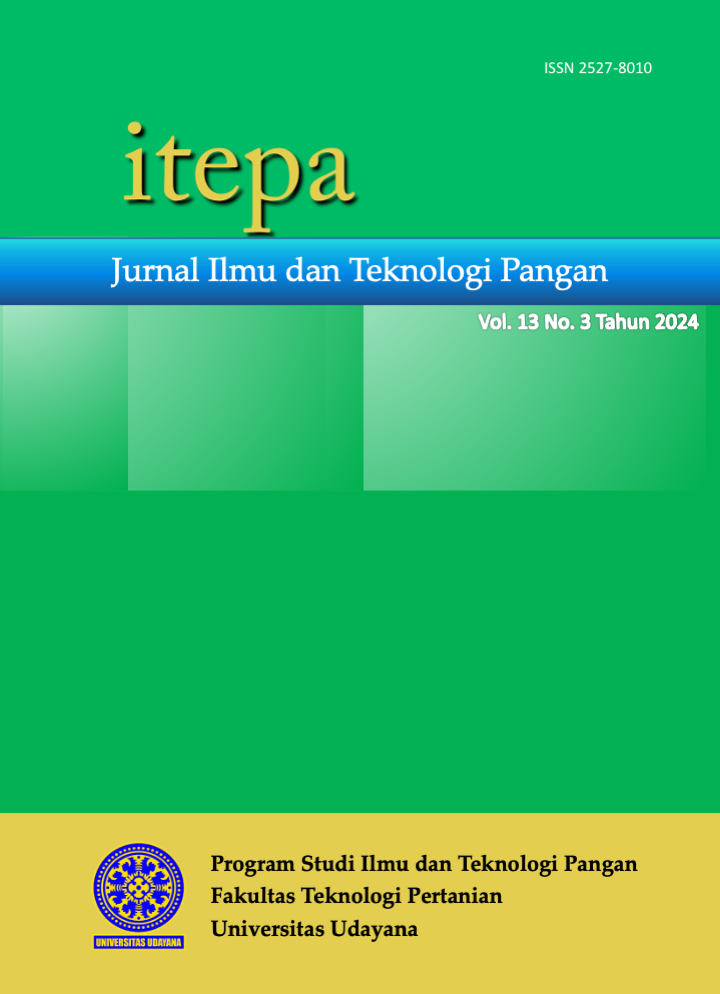Karakteristik Fisikokimia dan Sensoris Dodol dengan Perbandingan Tepung Ketan dan Tepung Edamame (Glycine max (L.) Merrill)
Abstract
Dodol is a traditional Indonesian food made by mixing and heating glutinous rice flour, coconut milk, and sugar, resulting in a chewy texture, brown color, and sweet taste. Dodol contains a high amount of carbohydrates and fat but is low in fiber and protein. The addition of edamame flour in dodol can increase its protein and fiber content. This research was aimed to determine the characteristics of dodol produced using a combination of glutinous rice flour and edamame flour and determine the optimal ratio of glutinous rice flour to edamame flour for producing the best dodol characteristics. This research used a Completely Randomized Design with ratios of glutinous rice flour and edamame flour in dodol production that consisted of 6 levels: 100:0, 90:10, 80:20, 70:30, 60:40, and 50:50, each replicated 3 times. Data were analyzed through analysis of variance and the treatment with significant effects (P<005) were followed by Duncan Multiple Range Test. The results showed that the ratio of glutinous rice flour and edamame flour had a significant effect (P<0.05) on the moisture content, ash content, protein content, fat content, carbohydrate content, dietary fiber content, chewiness, and sensory properties of dodol. The ratio of 80 percent glutinous rice flour and 20 percent edamame flour produced dodol with the best characteristics: moisture content of 17.52 percent, ash content of 1.41 percent, protein content of 4.78 percent, fat content of 8.73 percent, carbohydrate content of 67.56 percent, total dietary fiber content of 11.25 percent, insoluble dietary fiber content of 10.32 percent, soluble dietary fiber content of 0.92 percent, chewiness of 3.66 N, moderately liked color, aroma, chewy texture, distinctive edamame flavor, and overall acceptance.
Keywords: dodol, physicochemical, sensory, edamame flour, glutinous rice flour





